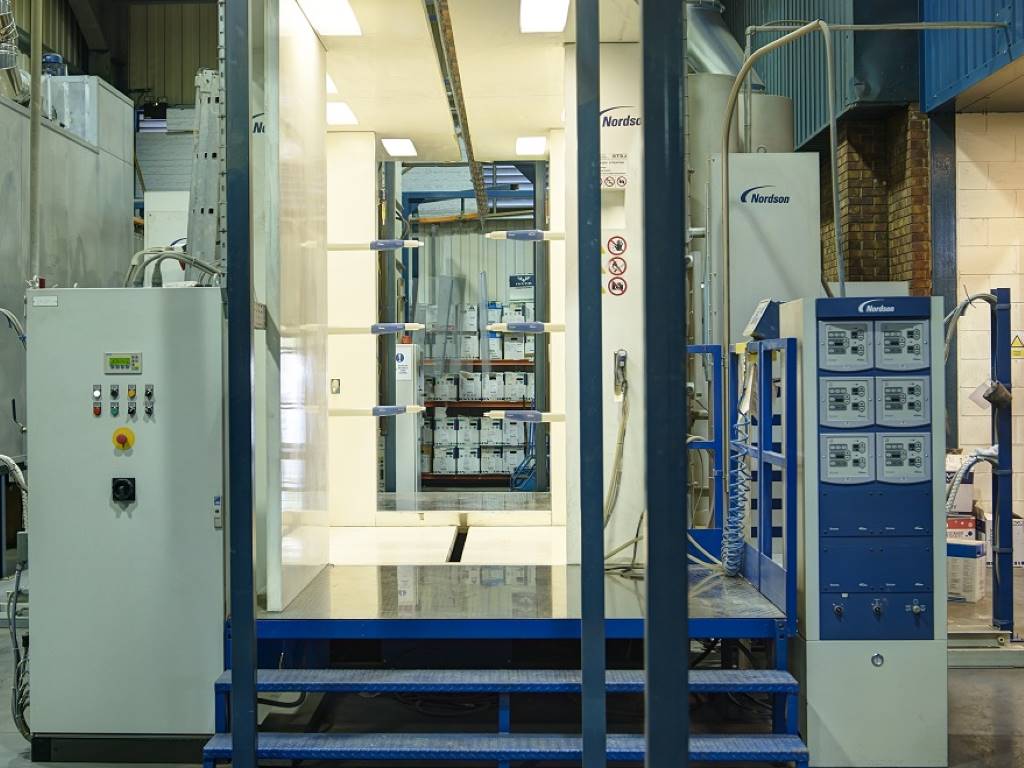Feature-rich finishing

Iscar UK sales manager, David Jones explores the ways aerospace manufacturers can reduce their cost per unit by increasing metal removal rates when aluminium milling roughing - and also achieve faster table feeds for semi-finishing and finishing operations.
The milling of aluminium parts for the aerospace industry is a machining process that requires the removal of large volumes of material by rough milling. As a result, semi-finishing and finishing operations of these parts are characterised by the creation of narrow walls and thin bases that lead to limited workpiece rigidity.
Despite aluminium being a soft material with relatively good machinability, due to the large size of many aerospace parts and their multiple pockets, milling operations normally involve the removal of over 90% of the original workpieces’ material, a long process that involve extended semi-finishing and finish milling times.
Throughout the world, many parts are still produced on gantry machines that feature large horizontal tables and vertical spindles. This machine tool arrangement often causes chip evacuation difficulties. Also as these machine tools have limited spindle power and speed capabilities, limited control results in low feeds, which leads to long production times.
The aluminium removal rate ability for the common gantry machine reaches up to 2,000cc/min, while semi-finishing and finishing operations are also very time-consuming due to control and spindle speeds limits.
Thick and fast
In order to reduce their cost per unit (CPU), manufacturers need to increase metal removal rates (MRRs) for roughing and achieve faster table feeds for semi-finishing and finishing operations. To help manufacturers realise these aims, machine tool builders developed the now-common and more efficient 5-axis machine tools that have much higher spindle speeds - up to 30,000 to 33,000rpm, combined with increased power. The first generation of these powerful machines were typically rated at 60kW; later machine power was increased to 70kW and now 80kW to 120kW figures are common. Today’s advanced 5-axis machine also often feature coolant through spindle capability, resulting in much improved coolant delivery and chip evacuation, vitally important attributes when milling deep pockets.
When roughing with spindle speeds of 30,000rpm at 60kW power in reliable production conditions, MMRs of 4,000cc/min for aluminium is achieved, similarly an MMR of 5,000cc/min is achieved with 80kW of power. Machine’s featuring updated reinforced spindles with 120kW of power are able to remove 8,000cc/min aluminium.
The emergence and continuing development of modern 5-axis machines with enhanced capabilities have challenged tool manufacturers to develop a range of advanced tools with the ability to function effectively in much higher, extreme cutting conditions.
Rough milling tools have an indexable insert diameter of 50mm, whereby the number of inserts is dictated according to the machine’s spindle power; Z=2 for 60kW, Z=3 for 80kW and Z=4 for the reinforced spindle 120kW.
Following the completion of rough milling operations, the use of a machine capable of 30,000rpm with fast CNC axis controls of up to 60,000mm/min enables solid carbide end mills to be employed to significantly reduce milling times for both semi-finishing and finishing operations.
Solid carbide end mills with a 25mm diameter are commonly used to complete roughing operations within contours where a tool diameter of 50mm is too large.
The result of the above milling figures under extreme conditions considerably increases the productivity and performance of high-speed, modern machine tools when compared to the previously used machines. Today a standard, modern machine, with a powerful high spindle speed and fast controls, is much more productive than any top of the range, previous generation machine.
The extreme conditions modern 5-axis machines operate under contribute to higher MRR results. Although, to realise the full productive potential of these machines, suitable advanced cutting tools need to be used. To ensure the development and launch of a range of highly efficient cutting tools that are ideally suited to use on modern 5-axis machines, Iscar has taken a two-pronged approach. Not only has the company’s R&D department undertaken in-depth laboratory work and exhaustive in-house machining trials to help further refine a series of advanced cutting tool prototypes, it has also worked in close cooperation with several multinational aerospace companies to help ensure new products’ advanced capabilities in the harshest of aerospace-related aluminium milling situations.
A cut above
Iscar’s R&D department’s challenging brief was to design a class-leading range of cutting tools that were able to resist intense cutting and centrifugal forces and guarantee the delivery of an ultra-reliable process and ensure perfect chip evacuation while moving large volumes of chips when milling deep pockets. Also, in order to prevent built-up edge (BUE) and to enable efficient milling in these extreme conditions, inserts with ground, sharp, super positive edge geometries, combined with polished rakes, needed to be designed.
Having successfully launched several advanced products related to efficient aluminium milling, aerospace manufacturers throughout the world are now reaping the multiple benefits of Iscar’s intensive research and on-going cooperation. An innovative range of Iscar cutting tools are now available that are ideal for use on modern, powerful, fast milling machines with high spindle speeds. Iscar’s cutting tools are claimed to deliver unmatched results when milling aluminium parts for the aerospace industry.
Iscar HSM90S-style tools with indexable inserts were developed specifically for the efficient rough milling of aluminium, at for instance 33,000rpm and 120kW, enabling excellent performance, effective chip evacuation, lower cutting forces and the generation of less vibration. These advanced cutting tools are said to provide massive time savings when used on modern, powerful machines with high spindle speeds and fast feeds by reaching the highest levels of performance for efficient aluminium milling. The use of Iscar HSM90S style tools leads to increased productivity and reduce production costs.
For semi-finishing and finishing milling, Iscar has developed high-performance solid-carbide end mills that are suitable for extreme speed and fast feed conditions. Offering reduced machining times and lower costs, these tools deliver the required levels of accuracy and surface finish characteristics and result in the highly-efficient milling of aerospace industry aluminium parts.












